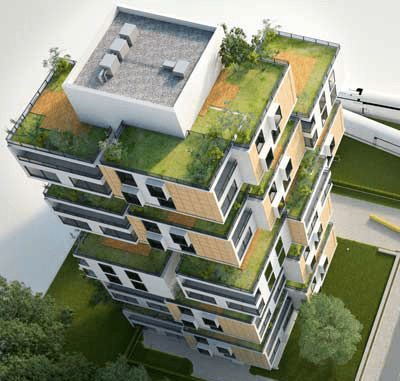Bhuvnesh Kumar
CREST, Pluss Advanced Technologies Ltd., Haryana, India
Apoorva Balwani
CREST, Pluss Advanced Technologies Ltd., Haryana, India
Corresponding Author: apoorva.balwani@pluss.co.in
Nidhi Agrawal
CREST, Pluss Advanced Technologies Ltd., Haryana, India
Vishnu Sasidharan
CREST, Pluss Advanced Technologies Ltd., Haryana, India
John Victor Christy
CREST, Pluss Advanced Technologies Ltd., Haryana, India
Cite this article
Highlights
- PCM integrated space heating system is a novel off-grid solution.
- Air is used as the heat transfer medium for keeping the room temperatures in optimum range.
- The results validated the space heating solution by maintaining room temperature above 15 ℃.
- For 24 hours, while the ambient varied between 0 and 5 ℃, the room temperature was controlled in the range 15-20℃.
- The current system needs aesthetical and functional improvements to be commercialized.
Abstract
Phase change materials (PCM) integrated solar-powered space heating plays a crucial role in maintaining thermal comfort in cold regions where the temperature shoots down to -10 ℃. This paper presents the experimental results of using PCM HS22 integrated with solar energy to maintain comfortable conditions inside the experimental prototype in the cold ambient. The solar energy is stored in PCM during the daytime to use it for night-time during off-sunshine hours. The results show that the room temperature is maintained in the 10 to 20 ℃ temperature range when the ambient was between -10 to 0 ℃. The room temperature was maintained consistently for 24 hours.
Keywords
Space Heating, Thermal Energy Storage, Phase Change Materials, Thermal Comfort, Cold Climate Conditions
References
- Z. Zhou, Z. Zhang, J. Zuo, K. Huang, and L. Zhang, “Phase change materials for solar thermal energy storage in residential buildings in cold climate,” Renew. Sustain. Energy Rev., vol. 48, pp. 692-703, 2015. https://doi.org/10.1016/j.rser.2015.04.048
- P. Pradeep, C. Assistant, P. Karthick, S. Assistant, and C. Suthan, “Review on the design of pcm based thermal energy storage systems,” Imp. J. Interdiscip. Res. Imp. J. Interdiscip. Res., vol. 2, no. 2, pp. 2454-1362, 2016.
- A. Waqas and S. Kumar, “Phase change material (PCM)-based solar air heating system for residential space heating in winter,” Int. J. Green Energy, vol. 10, no. 4, pp. 402-426, 2013. https://doi.org/10.1080/15435075.2012.673518
- M. Rezaei, M. R. Anisur, M. H. Mahfuz, M. A. Kibria, R. Saidur, and I. H. S. C. Metselaar, “Performance and cost analysis of phase change materials with different melting temperatures in heating systems,” Energy, vol. 53, no. May 2013, pp. 173-178, 2013. https://doi.org/10.1016/j.energy.2013.02.031
- F. Bruno, “Using phase change materials (PCMs) for space heating and cooling in buildings,” 2004 AIRAH Perform. Enhanc. Build. Environ. Sustain. Des. Conf., no. March, pp. 26-31, 2004.
- Y. Zhang, G. Zhou, K. Lin, Q. Zhang, and H. Di, “Application of latent heat thermal energy storage in buildings: State-of-the-art and outlook,” Build. Environ., vol. 42, no. 6, pp. 2197-2209, 2007. https://doi.org/10.1016/j.buildenv.2006.07.023
- J. H. Patel, M. N. Qureshi, and P. H. Darji, “Experimental analysis of thermal energy storage by phase change material system for cooling and heating applications,” Mater. Today Proc., vol. 5, no. 1, pp. 1490-1500, 2018. https://doi.org/10.1016/j.matpr.2017.11.238
- D. Ling, G. Mo, Q. Jiao, J. Wei, and X. Wang, “Research on solar heating system with phase change thermal energy storage,” Energy Procedia, vol. 91, pp. 415-420, 2016. https://doi.org/10.1016/j.egypro.2016.06.277

 Bishal Thapa
Bishal Thapa





 Fred Sherman
Fred Sherman Sumedha Malaviya
Sumedha Malaviya Satish Kumar
Satish Kumar












 The three main global energy concerns of providing access to modern energy, enhancing the security of the energy supply, and minimising the impact of energy systems on the climate have an impact on both national and international energy governance. To develop solutions that address the many facets of these difficulties, however, a variety of actors and stakeholders must be included due to the complexity of the energy challenges.
The three main global energy concerns of providing access to modern energy, enhancing the security of the energy supply, and minimising the impact of energy systems on the climate have an impact on both national and international energy governance. To develop solutions that address the many facets of these difficulties, however, a variety of actors and stakeholders must be included due to the complexity of the energy challenges. Cities are responsible for more than 70% of the world’s energy consumption and 40% to 50% of its greenhouse gas emissions. Managing increasing urbanisation is a challenge, and nations must deal with the effects it will have on the environment in terms of energy and climate.
Cities are responsible for more than 70% of the world’s energy consumption and 40% to 50% of its greenhouse gas emissions. Managing increasing urbanisation is a challenge, and nations must deal with the effects it will have on the environment in terms of energy and climate. Our transition to a future with lower carbon emissions depends heavily on buildings. They are our places of residence, rest, and employment; they also account for around one-third of the world’s greenhouse gas emissions and nearly 40% of the world’s energy usage.
Our transition to a future with lower carbon emissions depends heavily on buildings. They are our places of residence, rest, and employment; they also account for around one-third of the world’s greenhouse gas emissions and nearly 40% of the world’s energy usage.